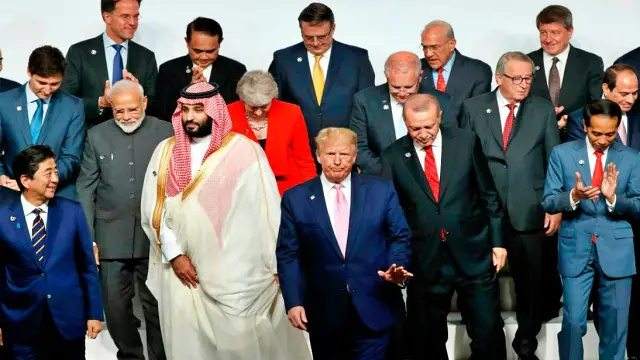In the aftermath of the apparently controversial election of L Sivaramakrishnan to the ICC’s Cricket Committee, Cricinfo has published an FAQ about the Cricket Committee. Neil Manthorp reported that there were two votes for the position, the second one was necessary because the first one elected Tim May. He also suggests that this maybe because BCCI is unhappy with the ICC’s attitude to DRS. My post here is concerned with one question on Cricinfo’s FAQ and the relationship between this controversial vote and the future of DRS. This is important because I think there is reason to be cautious about connecting BCCI’s actions to DRS, and assuming that the Cricket Committee has been doing good work on DRS – work which BCCI is trying to stymie. First I reproduce the relevant question and the answer in the FAQ below. The emphasis on the second paragraph of the answer is mine. I will then show that content of the answer is substantively wrong. This can be shown not based on speculative, informal or anonymous sources, but based on the ICC’s reporting of its meeting.
What has been the committee’s stand on the DRS? What has it recommended and what has been the outcome?
Right from the outset the committee has recommended the use of the referral system. At every meeting, the committee has re-iterated its view that, depending on the ability to finance the technology, that the DRS should be implemented universally in Test and ODI cricket.
Last year the ICC hired a former Cambridge University professor to verify the concerns of members like India who were not convinced about the accuracy of the two ball-tracking technology suppliers used by the ICC in the DRS. The study only re-affirmed the committee’s view that the technology was highly effective in eradicating mistakes.
Although the cricket committee has been consistently recommending the DRS, the ICC Executive Board in its October 2011 meeting allowed the participating nations to decide bi-laterally whether they wished to use the DRS. The cricket committee, however, continues to back the refining of the referral system till the point the members’ concern are fully addressed.
The ICC’s Cricket Committee has recommended the use of the DRS at least twice – first in 2011 and then in 2012. What follows is stuff that I have reported before. It is not based on anonymous sources but based on the ICC’s official communication’s department’s responses:
2011: According to the ICC’s press releases, in 2011 the ICC’s Cricket Committee “reviewed in detail the use of the DRS since its last meeting and, while recognising the need to take account of existing contractual arrangements between Member Boards and their broadcasters, the committee unanimously recommended that DRS should be used in all Test matches.”.
I wanted to find out what “reviewed in detail” entailed, so I asked the ICC. I reported my questions and ICC’s responses in detail here. According to the ICC, no specific instances of DRS use were reviewed at the 2011 cricket committee meeting. They also reported that independent assessment of ball tracking technology had not been commissioned by ICC. However, an officer of Hawkeye Innovations Ltd., one of the two companies that produces ball tracking technology, did give a presentation to the committee.
Given that using DRS “in all Test Matches” while taking into account “existing contractual arrangements between Member Boards and their broadcasters” meant that both vendors who make ball tracking technology (and do it substantially differently) would be involved in providing technology, it is striking that the committee chose to hear from one of the two vendors and zero independent reviewers. Both vendors continue to provide technology for DRS, and they disagree about the accuracy and reliability of the technology. Further, given that the ICC said that the Committee reviewed the use of DRS since its last meeting in detail, it is striking that this detailed review did not include a single specific instance of DRS use.
Based on the ICC’s own account of what was reviewed at the meeting, it is possible to say that the ICC’s unanimous recommendation was not based on any serious review of the evidence.
2012: In its publication of the results of the 2012 Cricket Committee Meeting, the ICC gave a more detailed account of its review of DRS. My detailed review of the ICC’s decisions in its 2012 meeting is here. The gist of it is that the ICC Cricket Committee “re-iterated its view that, depending on the ability to finance the technology, that DRS should be implemented universally in Test and ODI cricket.” (as the ICC’s publication states), based on a provisional report by Rosten in which he reported on 14 specific instances from a single series. So once again, the ICC’s Cricket Committee recommended universal implementation based on a review of only one of the two ball-tracking technologies.
While Rosten may have completed his work now and shown that ball tracking technology is robust, this is only a review of the ball tracking technology. DRS, as I have explained in detail before, consists of two equal parts – ball tracking, and a communications protocol. Cricinfo’s response conveys the impression that the ICC Cricket Committee’s recommendations were based on Rosten’s research. They were not, since they were made before Rosten had completed his work. Further, I have shown that the quality of the review conducted by the Cricket Committee is questionable based on the ICC’s account of it. This is important because the ICC’s Cricket Committee is seen as this largely apolitical committee which does serious technical work. The late Tony Greig referred to them in his Cowdrey Lecture last year. He said that it was frustrating to the Cricket Committee to see its recommendations be rejected in higher committees. In Greig’s words, it was “a sorry state of affairs and very frustrating for those who give so much time to getting things right.”.
It is not clear that they do.
Manthorp speculates that the removal of Tim May using ethically questionable methods (apparently at BCCI’s instigation – he provides no evidence to support this) had to do with BCCI’s opposition to DRS.
Why, you may reasonably ask, are Srinivasan and the BCCI so keen to get their man on the cricket committee? Apart from the obvious — it means yet more power and influence — perhaps there is another motive. Ask yourself which aspect of the game on the field currently annoys India the most, and the answer may be the umpire decision review system (DRS).
Sangakkara’s playing commitments mean he cannot dedicate sufficient time to his committee commitments. He has relied on May to harvest global player opinion.
If May is removed, Sivaramakrishnan may be able to tell the committee that “the players do not want DRS any more”. And that could be that.
Ravi Shastri, who famously got into an argument with Nasser Hussain about DRS, and has publicly opposed implementation of DRS before, has been a member of the ICC’s Cricket Committee (pdf, see p 11) that made the unanimous recommendation in 2011 (by inference, he supported the 2011 recommendation) and a part of the committee that made the recommendation (its not clear if it was unanimous) in 2012 (pdf, see p 1.7).
There is reason to be cautious about Manthorp’s speculation about motives for two reasons. First, it is not clear that the ICC’s Cricket Committee has been doing rigorous work on DRS. Given the evidence it could be argued just as easily that the Cricket Committee has basically been rubber stamping what David Richardson has wanted. At the very least, the Committee’s actions with respect to DRS reveal remarkable haste in reaching a particular recommendation without concern for showing that the recommendation is supported by evidence. Second, the BCCI is able to defeat DRS effectively in the higher committees, so it seems unnecessary to make new enemies for 1 solitary position on a 14 member board. After all, David Richardson has said that Anil Kumble may be amenable to persuasion as far as DRS goes.
Perhaps Kumble’s first role should be to bring to serious rigor to the cricket committee’s work. Thus far, the evidence suggests that at least in the case of DRS, Clive Lloyd’s Cricket Committee was little more than a rubber stamp.


















